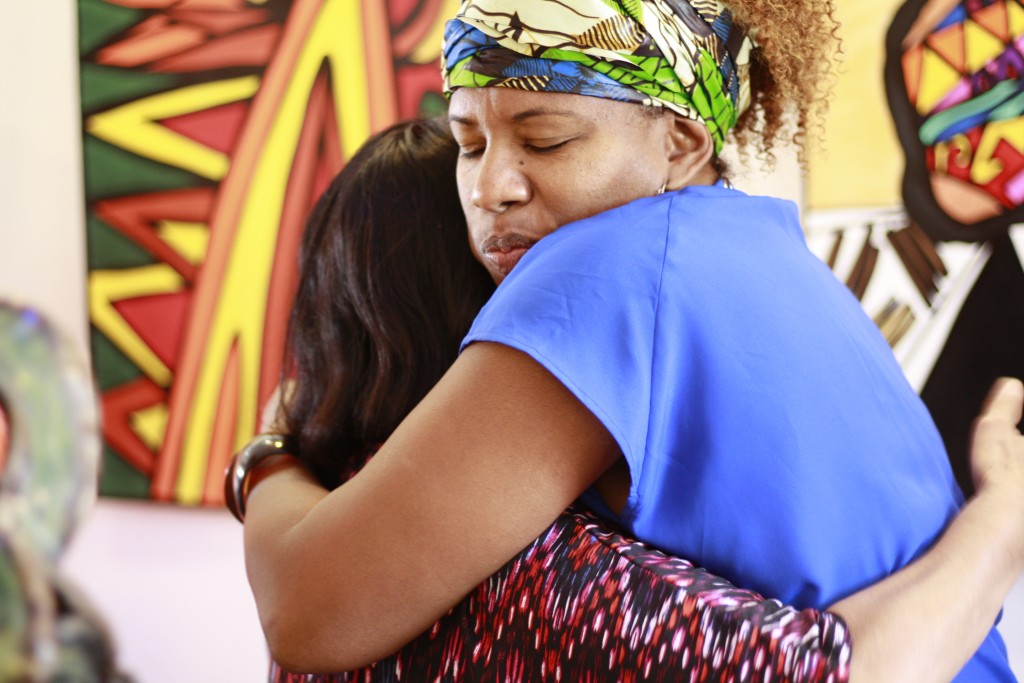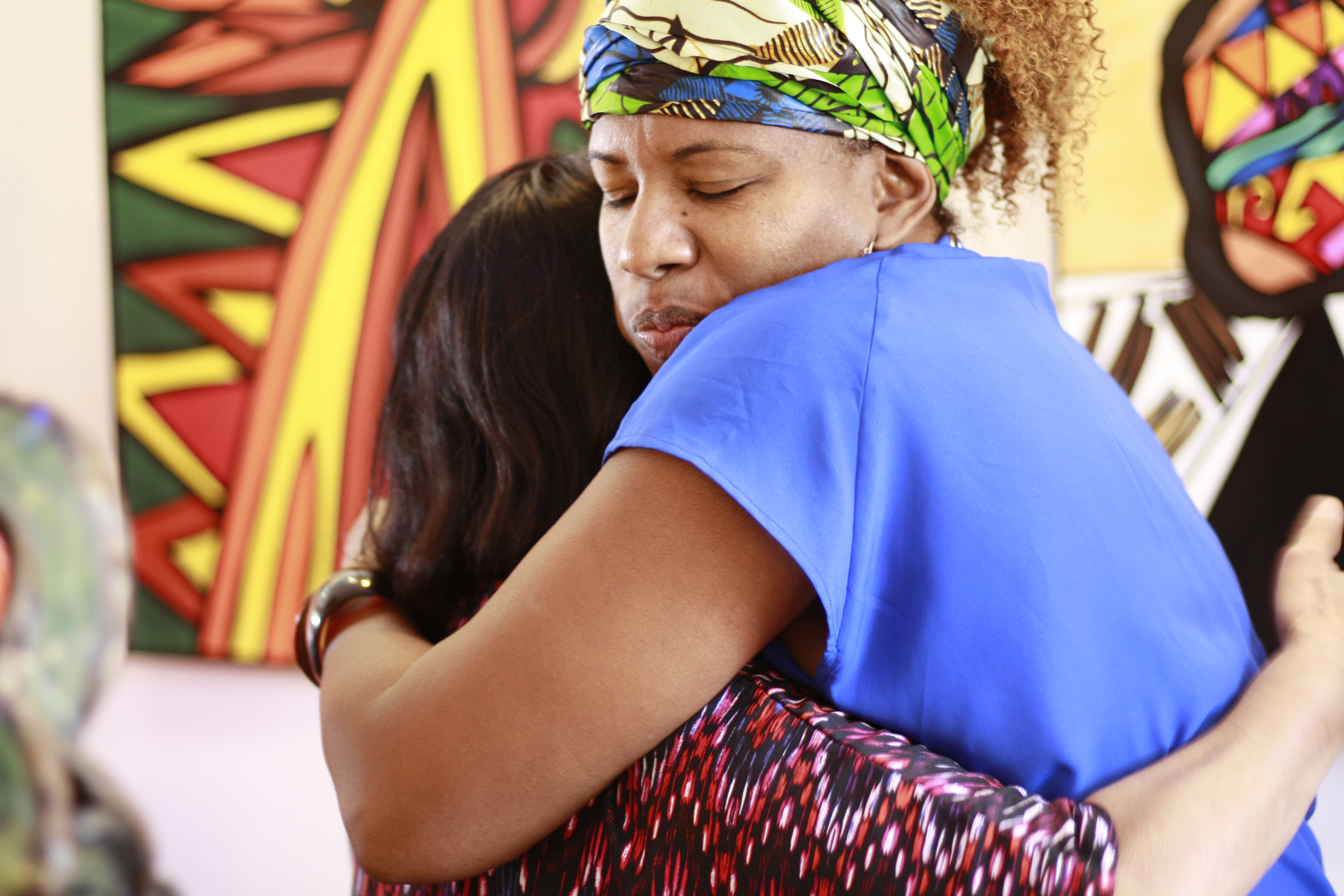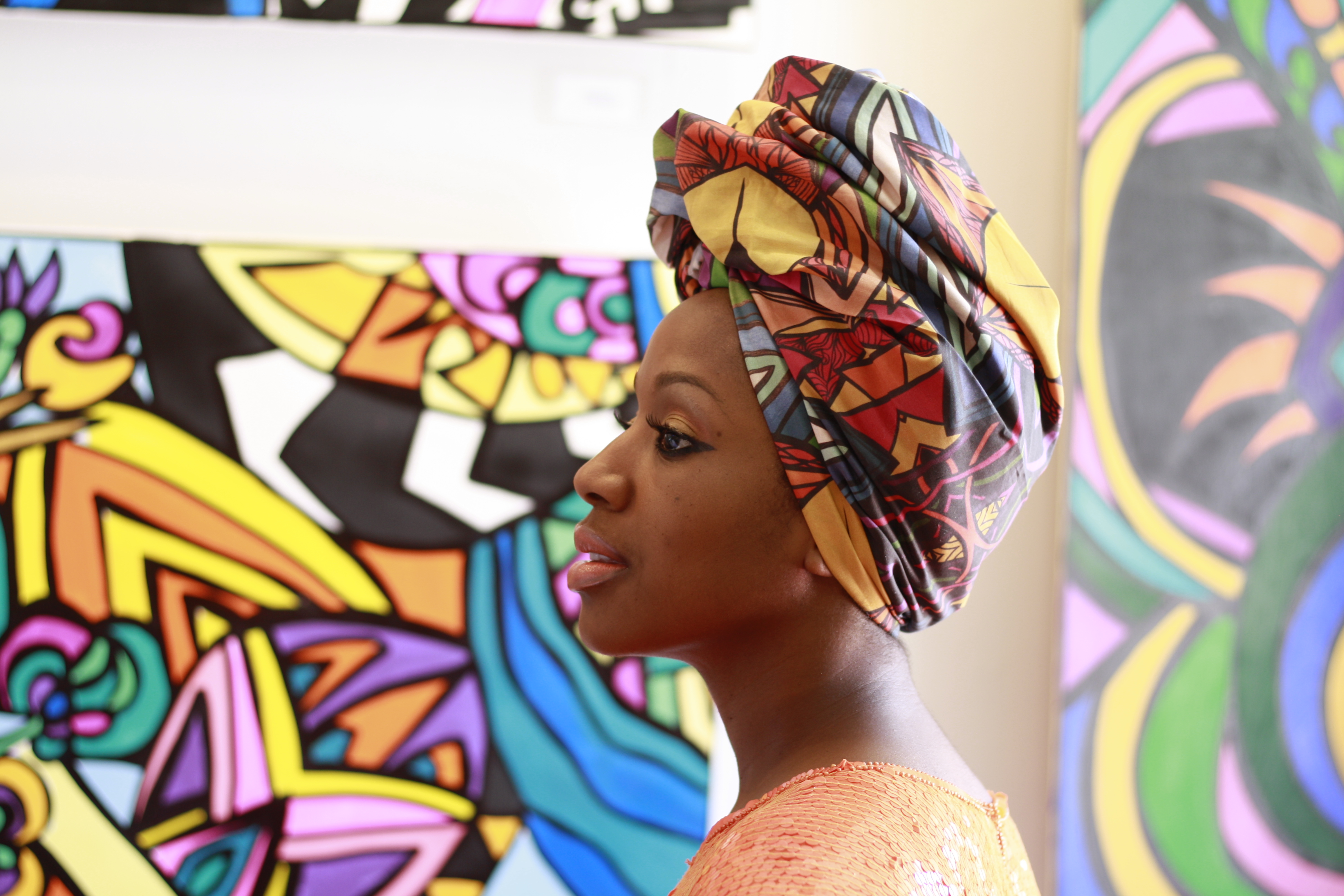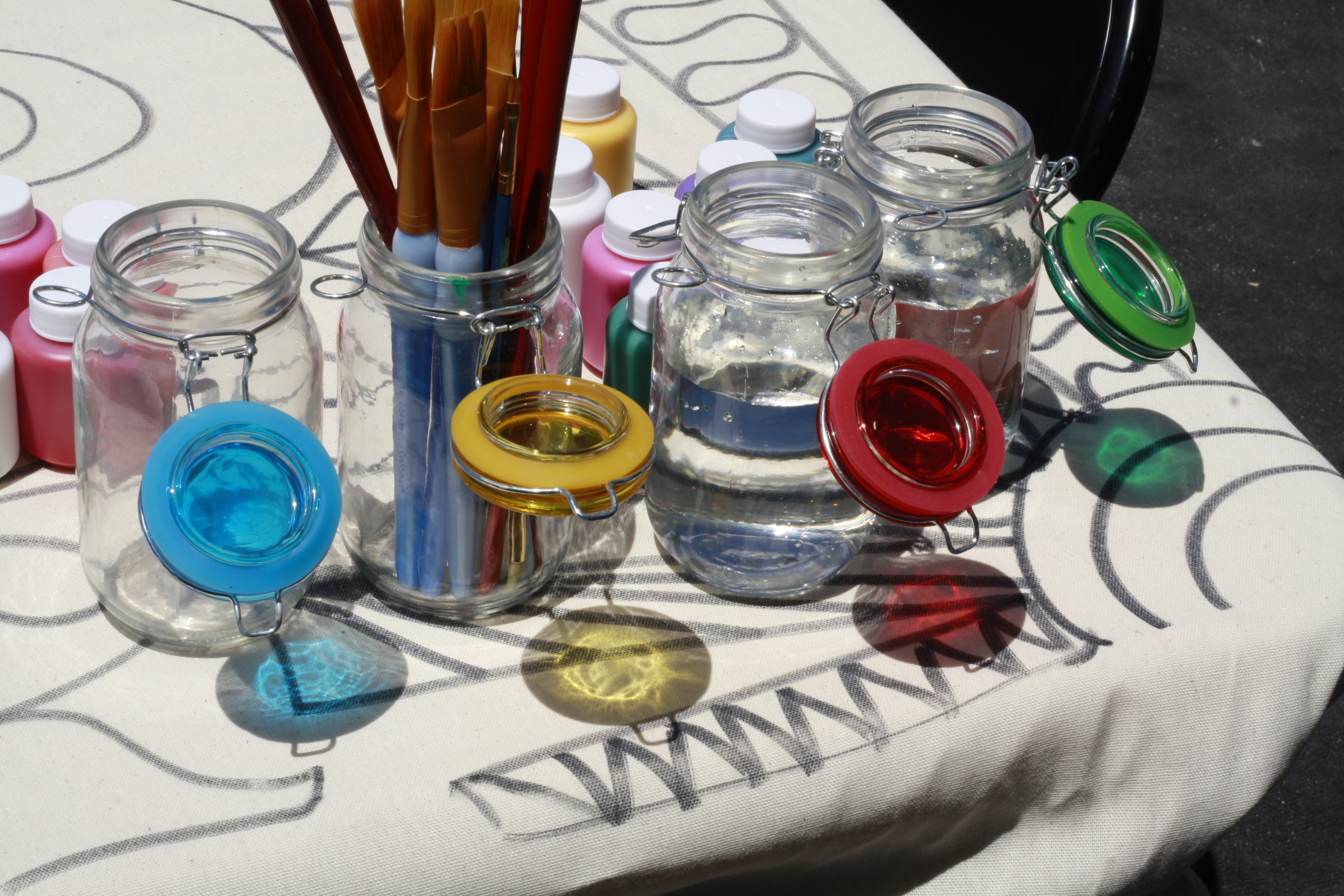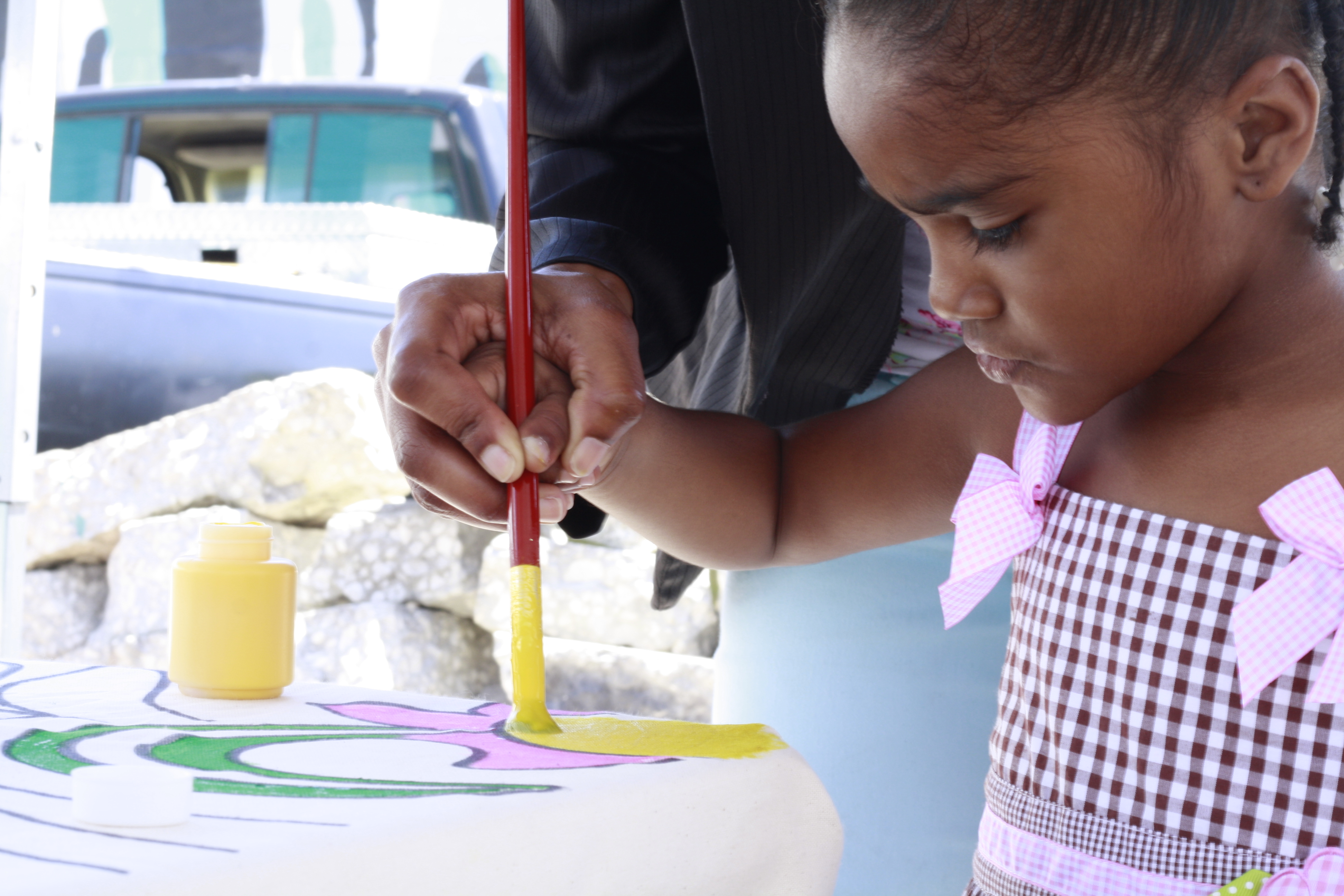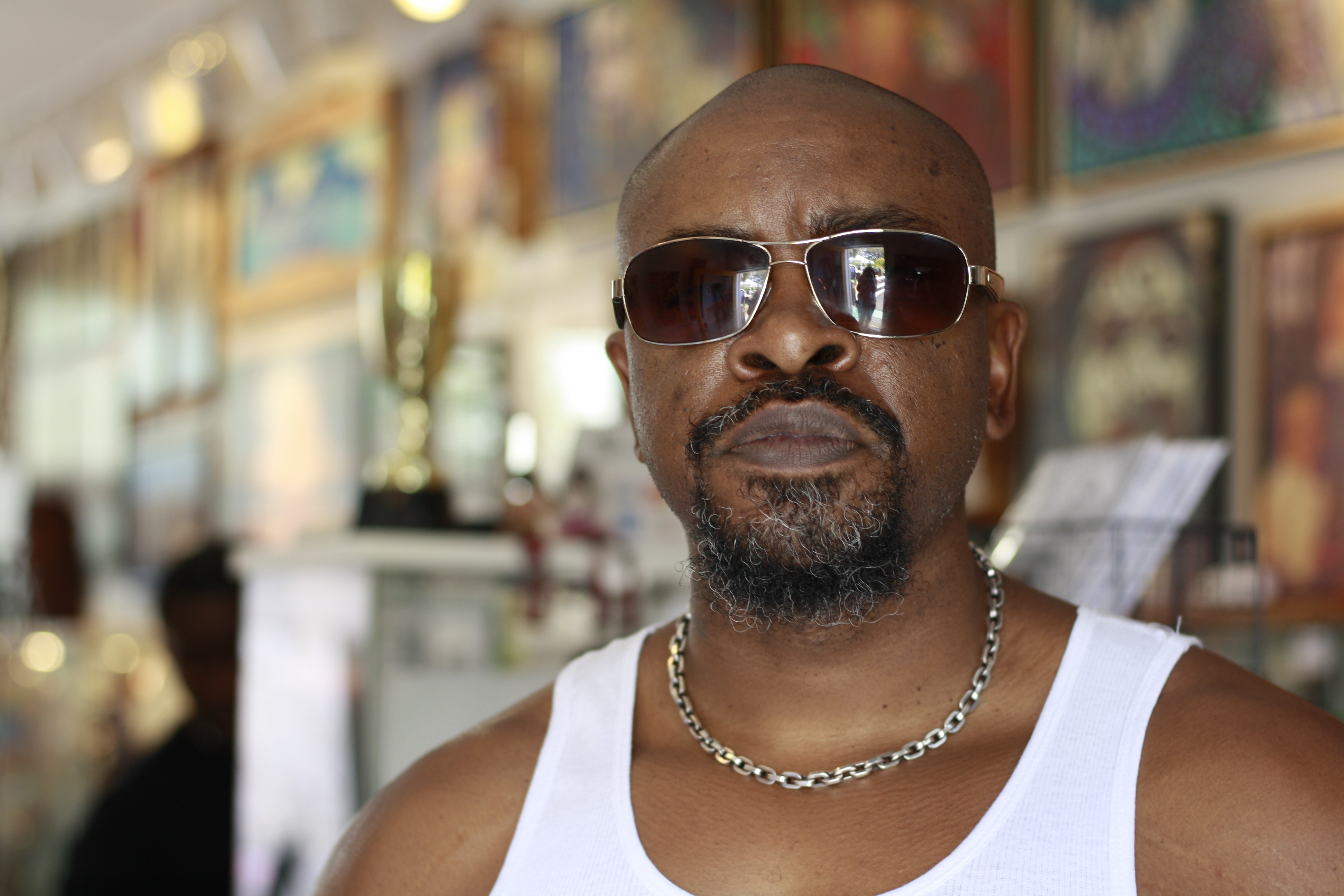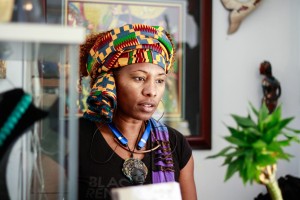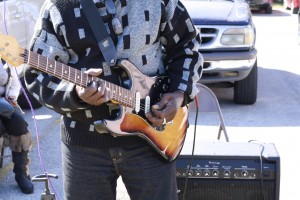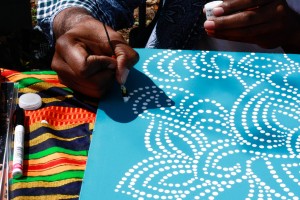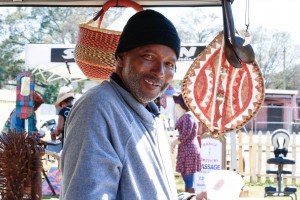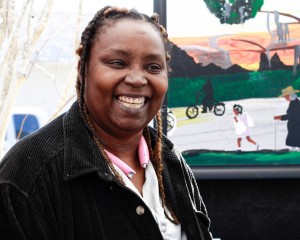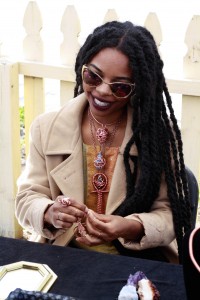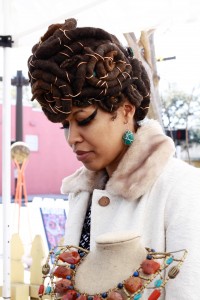REPORTING BY KATIE CALLIHAN AND MARLA KORENICH
PHOTOS BY KATIE CALLIHAN
NNB Reporters
MIDTOWN-During February of 2014, a massive snowstorm known as PAX froze and shut down the entire heartbeat of the city of Atlanta.

The major power outages left more than 100,000 people in the dark without heat for days, and for some, weeks. (source: http://time.com/6747/over-200000-without-power-in-georgia-as-winter-storm-descends/)
During that snowstorm two years ago, Melissa Mitchell was one of the many stuck inside. With nothing else to do, her curiosity peaked and she decided to pick up a paintbrush for the first time.
Within the first two weeks of her new painting career, Mitchell had sold 20 pieces. This was clear evidence that she had something special worth pursuing.
Mitchell said, “I was always colorful and creative, but I never painted before because I didn’t think I could.”
Little did she know that just a couple years later, she would be the featured artist at Gallerie 909’s second year anniversary celebration this past Sunday in Midtown, St. Petersburg.
Walking into the gallery, natural light bounced onto her collection from a large window next to the front door.
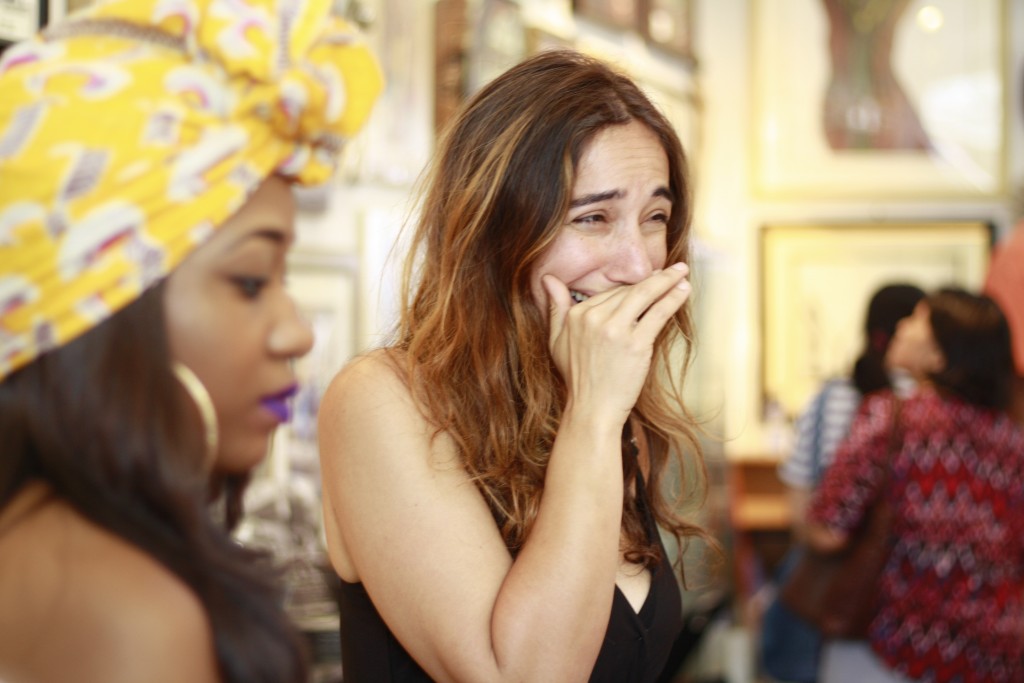
Her vibrant pieces covered the main entry white wall on the right-hand side of the room.
They added life that displayed bold, black lines contrasted by a pop of bright colors.
“My pieces are organized chaos. The black lines give balance,” Mitchell said about her painting style.
Spread across a white shelf and scattered under her wall of paintings, Mitchell was also selling handmade earrings. Mitchell said that she started to make earrings for herself because she couldn’t find anything else to buy that matched her bright clothes.

Mitchell has already sold over 300 pieces of jewelry without any traditional advertisements. She said that she only executes Facebook and Instagram as her network and marketing tools.
“I’m definitely a millennial,” said Mitchell. “All of my business is either from social media or word of mouth.”
This was not Mitchell’s first time in the hot seat. Since day one, Mitchell has already participated in about seven art shows and has sold over 150 pieces total.
Bright fabric like orange sherbet ice cream was wrapped around Mitchell’s head.“This is my artwork too,” she said. She explained that printing her paintings on fabric is another project she’s going to start working on for others to purchase as well.
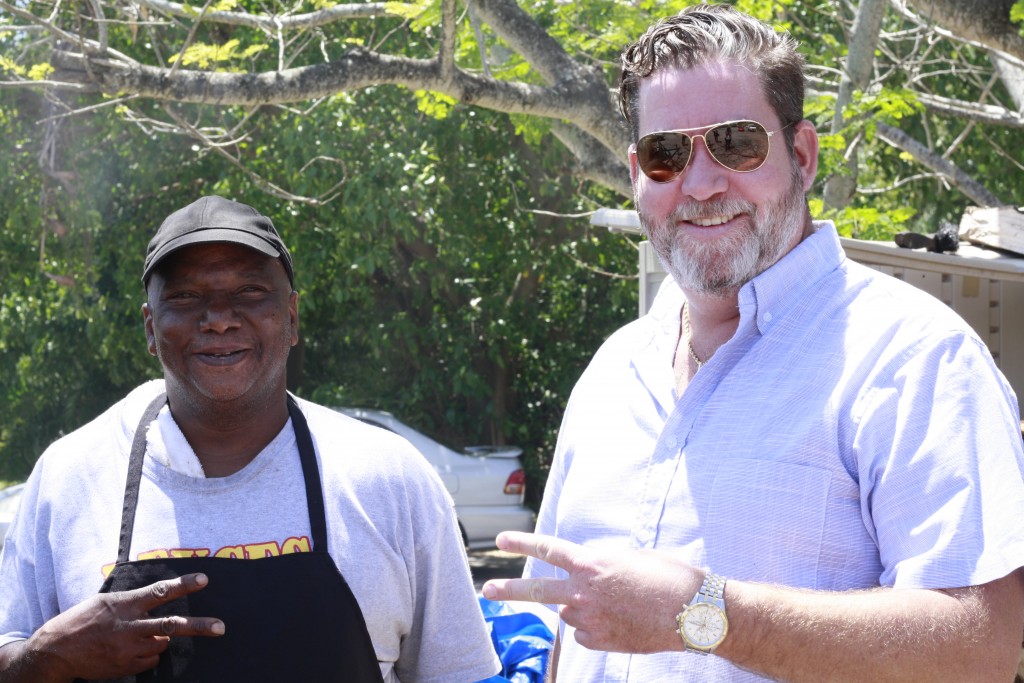
During the celebration at Gallerie 909, Mitchell sold at least 12 pieces, but she said that wasn’t her biggest success of the day.
“I spoke to an artist that is now ready to restart. If I encourage anyone, it is a good trip,” Mitchell said.
Mitchell was just one of the many artists that were welcomed by Carla Bristol, Gallerie 909’s owner and event curator.
Gathered around tables of plates with fresh baked mini-cheesecakes and BBQ pork sandwiches painters, musicians, sculptors, and friends all shared one reason for being there.
They just love Carla Bristol.
Annie Tyrell, owner of Annie’s Beauty Supply, gave Bristol credit for her success.
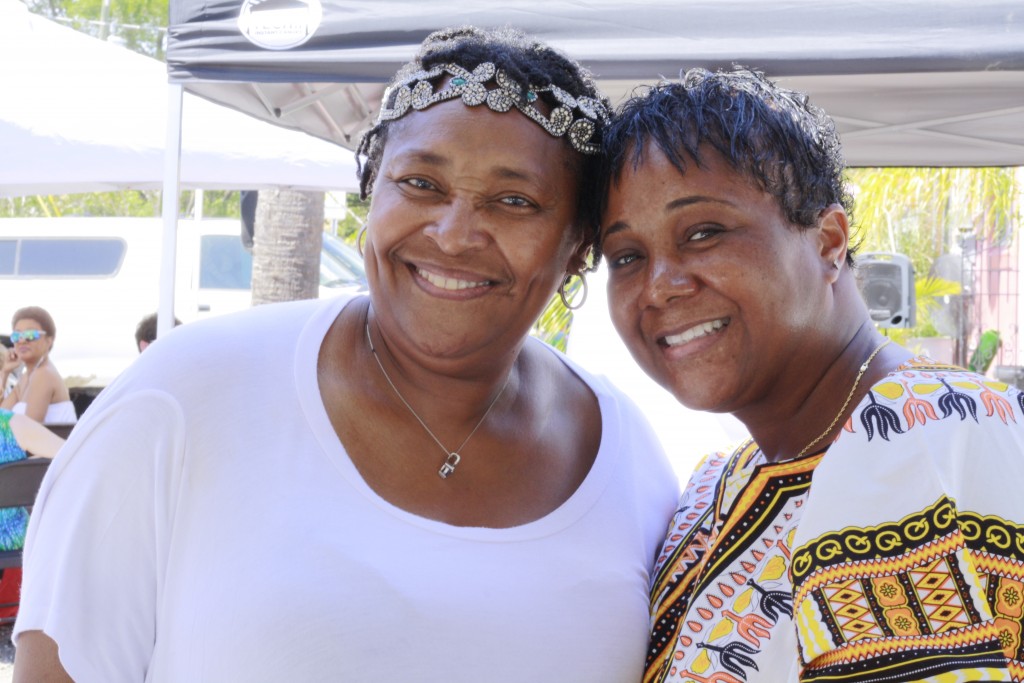
Tyrell moved her beauty supply store to be Bristol’s neighbor. Their storefronts now face each other on the Deuces. Tyrell said that Bristol found the new location for her.
Tyrell followed Bristol’s advice.
“At my old location, I was dead, and now, I am alive,” said Tyrell. “She is the life behind the Deuces.”
Creative Pinellas executive director Barbara St. Clair, was one of many in the crowd and said, “She’s a dynamo. Every time she does something, it’s great.”
“This is a place for connecting,” said Bristol.
Bristol hopes to expand the gallery to even include art that people can wear.
Bristol also mentioned that she wants larger workshop classes for the future.
